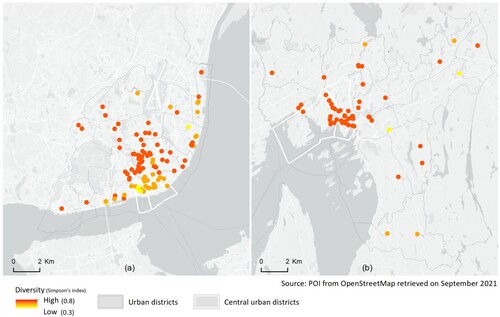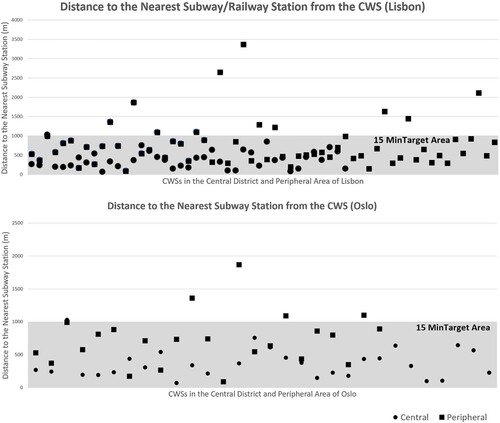Figures & data
Table 1. Selected content analysis of the planning documents: Differences and similarities in approaching chrono-urbanism and related notions, as well as approach and role of NWS, and their frequencies.
Figure 1. Density of existing CS in urban districts of Lisbon (a) and Oslo (b). Source: Tomaz et al., Citation2021.
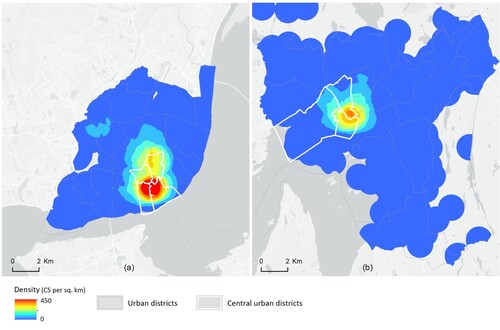
Figure 2. Accessibility of CSs to the nearest subways station within 10’ and 15’ walking distances Oslo.
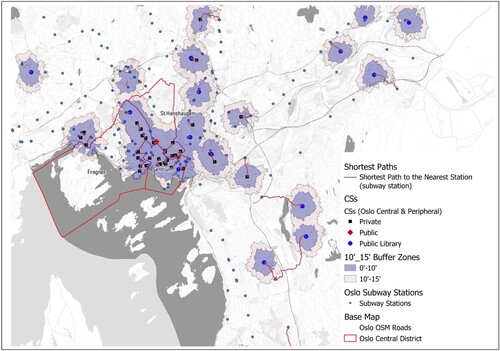
Figure 3. Accessibility of CSs to the nearest subways station within walking distances (10’ and 15’) Lisbon.

Figure 5. The degree of diversity of POIs for each individual CS in both Lisbon (a) and Oslo (b) within the 15’ area both in central and peripheral urban districts.
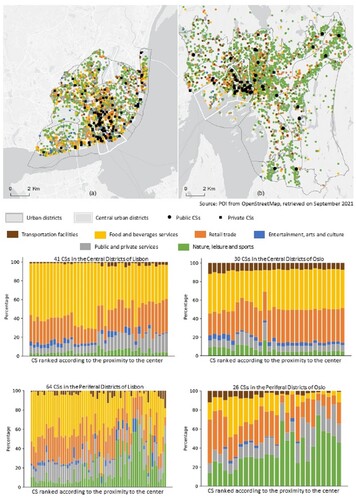
Figure 6. Diversity Index of the CSs (concerning the POI at a distance of 15’) in Lisbon (a) and Oslo (b).
